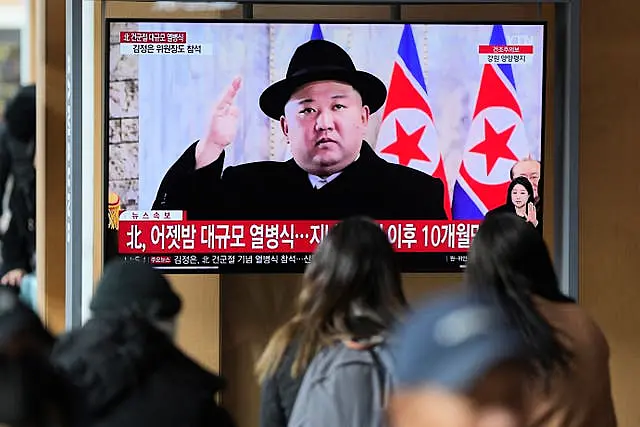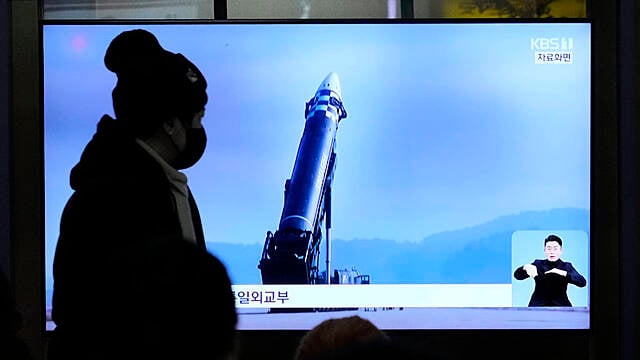North Korea on Saturday fired a long-range missile from its capital into the sea off Japan, according to its neighbours, a day after it threatened to take strong measures against South Korea and the US over their joint military exercises.
According to the South Korean and Japanese militaries, the missile was fired at a high angle, apparently to avoid reaching the neighbours’ territories, and travelled about 560 miles during an hour-long flight.
The details were similar to North Korea’s Hwasong-17 intercontinental ballistic missile test flight in November, which experts said demonstrated potential to reach the US mainland if fired on a normal trajectory.
Japanese government spokesman Hirokazu Matsuno said no damage has been reported from the missile, which landed within Japan’s exclusive economic zone, about 125 miles west of Oshima island. Oshima lies off the western coast of the northernmost main island of Hokkaido.

North Korea’s foreign ministry on Friday threatened “unprecedentedly” strong action against its rivals, after South Korea announced a series of planned military exercises with the US aimed at sharpening their response to the North’s growing threats.
The US Indo-Pacific Command said the launch did not pose “an immediate threat to US personnel, or territory, or to our allies”, but said it will continue to monitor the situation. It called on North Korea to “refrain from any further unlawful and destabilising acts”.
The office of South Korean president Yoon Suk Yeol said his national security director, Kim Sung-han, presided over an emergency security meeting where members accused the North of escalating regional tensions.
They denounced North Korea for accelerating its nuclear arms development despite signs of worsening economic problems and food insecurity, saying such actions would bring only tougher international sanctions.
Japanese prime minister Fumio Kishida said Tokyo was closely communicating with Washington and Seoul over the launch, which he called “an act of violence that escalates provocation toward the international order”.

The launch was North Korea’s first since January 1, when it test-fired a short-range weapon.
It followed a military parade in Pyongyang last week, where troops rolled out more than a dozen ICBMs as leader Kim Jong Un watched in delight from a balcony.
The unprecedented number of missiles underscored a continuation of expansion of his country’s military capabilities despite limited resources while negotiations with Washington remain stalemated.
Those missiles included a new system experts say is possibly linked to the North’s stated desire to acquire a solid-fuel ICBM.
North Korea’s existing ICBMs, including Hwasong-17s, use liquid propellants that require pre-launch injections and cannot remain fuelled for prolonged periods.

A solid-fuel alternative would take less time to prepare and is easier to move around on vehicles, providing less opportunity to be spotted.
North Korea’s missile tests have been punctuated by threats of pre-emptive nuclear attacks against South Korea or the US over what it perceives as a broad range of scenarios that put its leadership under threat.
Kim doubled down on his nuclear push entering 2023, calling for an “exponential increase” in the country’s nuclear warheads, mass production of battlefield tactical nuclear weapons targeting “enemy” South Korea and the development of more advanced ICBMs.
The North Korean statement on Friday accused Washington and Seoul of planning more than 20 rounds of military drills this year, including large-scale field exercises, and described its rivals as “the arch-criminals deliberately disrupting regional peace and stability”.
North Korea has traditionally described US-South Korea military exercises as rehearsals for a potential invasion, while the allies insist that their drills are defensive in nature.







